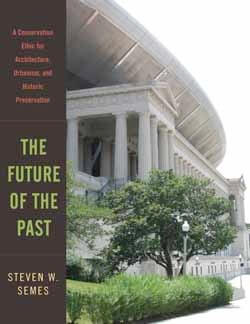The Future of the Past

By Steven Semes
The debate between traditionalists and modernists has focused on the style that should be used for new buildings; it has paid less attention to how new buildings or additions should be designed in historic settings. Current policies in historic preservation, as defined by the Venice Charter and the Secretary of the Interior’s Standards for Rehabilitation, emphasize differentiating the new from the old and typically view new work in historic styles as “false history.” Consequently, historic places are confronted with a “transgressive” modernism that has decontextualized historic structures and neighborhoods around the world, despite preservation regulations intended to protect them.
The Future of the Past takes another approach, based on the premise that the wholeness and continuity of the historic setting is paramount. New traditional architecture holds the promise of continuity in the historic built environment and calls for rethinking preservation standards and policies to end the counterproductive promotion of stylistically dissonant interventions in historic places.